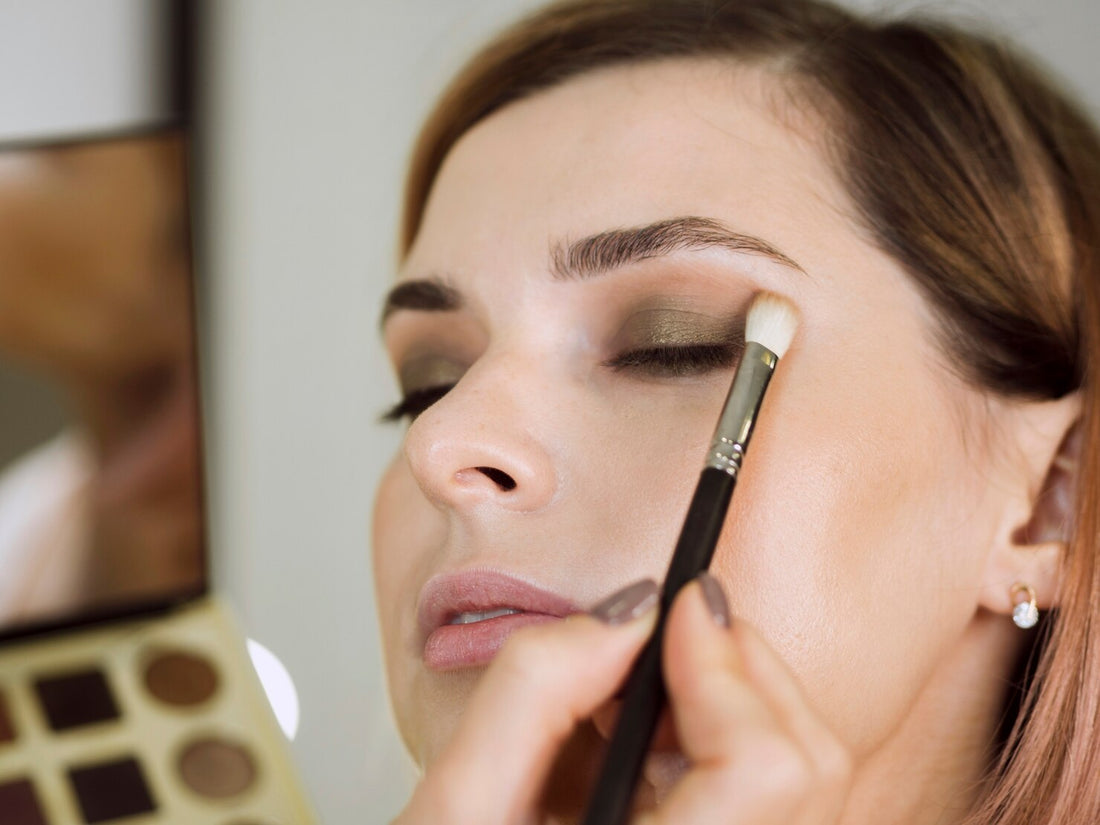
When choosing between a wide range of eyeshadows, it is important to consider complementary colors to best highlight your eyes. A complementary color is the one placed opposite in the color wheel, directly contrasting the color it’s paired with.
However, this doesn’t mean you can’t use your desired color - it’s just a way to make your eyes stand out the most.
At Nulallergi, we of course recommend using an allergy-free eyeshadow. This ensures you can safely use eyeshadow throughout your life.
All our eyeshadows are Allergy Certified, so you can use them without worries.
You have green eyes
If you have green eyes, consider using the following colors to enhance your eyes:
Burgundy, rust, copper, apricot, and pink: Red is the complementary color to green, but it’s best to avoid a bright red eyeshadow. Instead, choose shades with hints of red, such as burgundy, rust, copper, apricot, and pink.
Purple and brown: These colors also contain red tones and work well for green eyes.
As an accent:
Black, gold, moss green, and army green: Using green tones with a touch of brown can create contrast with the complementary color and add depth to the shadows, giving life to your eyes.
You have brown eyes
If you have brown eyes, consider using the following colors to enhance your eyes:
Almost all colors: Brown contains a bit of all three primary colors (yellow, red, and blue), meaning you can use any complementary color. However, gold, navy blue, taupe (brown-purple), purple, pink, green, turquoise, and petrol blue particularly make your eyes sparkle.
Do you have light brown eyes? These have more yellow, so complementary colors are purple, taupe, or navy blue.
Do you have dark brown eyes? These have more blue or red, so complementary colors are either orange and golden tones or greenish shades.
As an accent:
Black: Brown eyes handle very dark smokey eyes well, as the contrast isn’t too harsh.
You have blue eyes
For people with blue eyes, certain colors best highlight their eye color. Apricot and peach shades are optimal since orange is the complementary color to blue. However, you don’t need to pick a bright orange eyeshadow; shades leaning toward orange, such as apricot and peach, also work well. Copper, bronze, and gold are also good choices as they have a hint of orange, creating warm and golden tones.
As an accent:
Purple, blue, gray, and black can create a beautiful contrast, but avoid using them too much on the entire lid as they can make the eyes look washed out. Instead, use them as eyeliner or at the edge of the lid to create contrast and a striking effect. Using black on the entire lid may create too strong a contrast, resulting in a harsh look.
Tips and Tricks for Applying the Perfect Eyeshadow
To achieve the perfect eyeshadow look, it’s important not only to choose the right color but also to apply it correctly. Makeup should consider your eye shape and mood to achieve the best results.
Quick Eye Makeup
For simple eye makeup, you can just use a medium-light base color on the eyelid.
- Apply the base color over the entire lid.
- Use a little more eyeshadow on the inner edge of your eye and blend it upward toward the brows.
- For an extra effect, add a thin line of eyeshadow under your lower lashes.
More Detailed Eye Makeup
Use two colors in light and dark shades to achieve a more detailed eye makeup look.
- Apply the dark eyeshadow in a V-shaped pattern at the outer corner of the eye.
- Use more dark eyeshadow on the eyelid.
- Use the light eyeshadow to brighten the inner corner of the eye and under the eyebrows.
Evening Makeup
For a more sophisticated evening makeup, you can use up to four different colors.
- Apply a base color to the eyelid but avoid applying it too close to the nose or all the way to the brows as it may look too exaggerated.
- Use a new color along the lash line and add extra color to the outer corners of the eyes.
- Use a light color to brighten the area under the brows and at the inner corners of the eyes as this makes the eyes appear larger.
- Apply the final color in the crease line just below the brow. Remember to choose an allergy-free eyeshadow to avoid allergic reactions.

